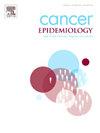绘制早期(I-III 期)非小细胞肺癌患者的病程和治疗模式图。
IF 2.4
3区 医学
Q3 ONCOLOGY
引用次数: 0
摘要
简介:我们绘制了大型医疗机构患者从症状出现到接受干预的过程,并描述了主要治疗方法:我们在一项基于人群的回顾性队列研究中绘制了患者从症状出现到接受干预的过程,并描述了一家大型医疗机构对患者的主要治疗方法:从以色列国家癌症登记处确定了2016年至2019年期间新诊断出的I-III期非小细胞肺癌(NSCLC)成人患者,并进行了病历审查以提取去身份化数据。构建了以下时间线:从症状发作到成像,从成像到活检,从活检到开始主要治疗。截止日期:2021 年 12 月 31 日。活组织检查前一年内采集初始症状:在 302 名患者中(41% 为女性,70% 年龄大于等于 65 岁,79% 曾经或正在吸烟,62% 为腺癌),34.1% 为 I 期,10.3% 为 II 期,42.1% 为 III 期,13.6% 为未知期(AJCC 第 8 版)。在基线年,80.5% 的患者向医生报告了至少一种症状,12.3% 的患者报告了四种或更多症状。最常见的症状是咳嗽(29.8%)、肺炎(24.2%)、胸痛(18.5%)、支气管炎(17.5%)和喘息(17.2%)。有初始症状的患者(243 人)从症状出现到成像的中位时间为 5.5 个月(95% CI:4.8-6.3),所有患者从成像到开始初级治疗的时间为 2.6(2.3-2.9)个月。从出现症状到采取干预措施的总时间为 8.5 个月(7.6-9.3 个月)。超过 93% 的 I 期患者接受了手术,4.9% 接受了明确的放射治疗。超过 83% 的 II 期患者接受了手术,其中 54.8% 接受了辅助/新辅助化疗。在III期患者中,68.5%接受了明确的化学放疗(一半接受了杜伐单抗),其余患者接受了手术和辅助/新辅助治疗:结论:80.5%的患者无症状,从出现症状到开始治疗的中位时间为8.5个月。提高患者和医生对肺癌症状的认识以及引入筛查计划对减少这些延误至关重要。本文章由计算机程序翻译,如有差异,请以英文原文为准。
Mapping the patient journey and treatment patterns in early-stage (stage I-III) non-small cell lung cancer
Introduction
We map the patient journey from symptom onset to intervention and describe primary treatment in a retrospective population-based cohort study of patients in a large healthcare-provider.
Methods
Newly diagnosed adult patients diagnosed with stages I-III non-small cell lung cancer (NSCLC) between 2016 and 2019 were identified from the Israel National Cancer Registry and chart review was performed to extract de-identified data. The following timelines were constructed: from symptom onset to imaging, imaging to biopsy, and biopsy to primary treatment initiation. Cutoff: 31st December 2021. The initial symptom was captured up to one year prior to biopsy.
Results
Among 302 patients (41 % female, 70 % >=65 years, 79 % former or current smoking, 62 % adenocarcinoma), 34.1 % stage I, 10.3 % stage II, 42.1 % stage III and 13.6 % unknown (AJCC ver. 8). In the baseline year, 80.5 % of patients reported at least one symptom to their physician, and 12.3 % reported four or more symptoms. The most common symptoms reported were cough (29.8 %), pneumonia (24.2 %), chest pain (18.5 %), bronchitis (17.5 %) and wheezing (17.2 %). For patients with an initial symptom (n=243) median time from symptom onset to imaging was 5.5 months (95% CI:4.8–6.3), and time from imaging to primary treatment initiation was 2.6 (2.3–2.9) months in all patients. Total duration from symptom to intervention was 8.5 months (7.6–9.3). Over 93 % of stage I patients underwent surgery and 4.9 % received definitive radiation. Over 83 % of stage II patients underwent surgery; of these, 54.8 % received adjuvant/neoadjuvant chemotherapy. Of stage III patients, 68.5 % received definitive chemoradiation (half received durvalumab), and the remaining underwent surgery with adjuvant/neoadjuvant treatment.
Conclusion
A total of 80.5 % of patients were symptomatic and the median duration from symptom onset to treatment initiation was 8.5 month long. Improving patient and physician awareness to lung cancer symptoms, and the introduction of screening programs are essential for reducing those delays.
求助全文
通过发布文献求助,成功后即可免费获取论文全文。
去求助
来源期刊

Cancer Epidemiology
医学-肿瘤学
CiteScore
4.50
自引率
3.80%
发文量
200
审稿时长
39 days
期刊介绍:
Cancer Epidemiology is dedicated to increasing understanding about cancer causes, prevention and control. The scope of the journal embraces all aspects of cancer epidemiology including:
• Descriptive epidemiology
• Studies of risk factors for disease initiation, development and prognosis
• Screening and early detection
• Prevention and control
• Methodological issues
The journal publishes original research articles (full length and short reports), systematic reviews and meta-analyses, editorials, commentaries and letters to the editor commenting on previously published research.
 求助内容:
求助内容: 应助结果提醒方式:
应助结果提醒方式:


